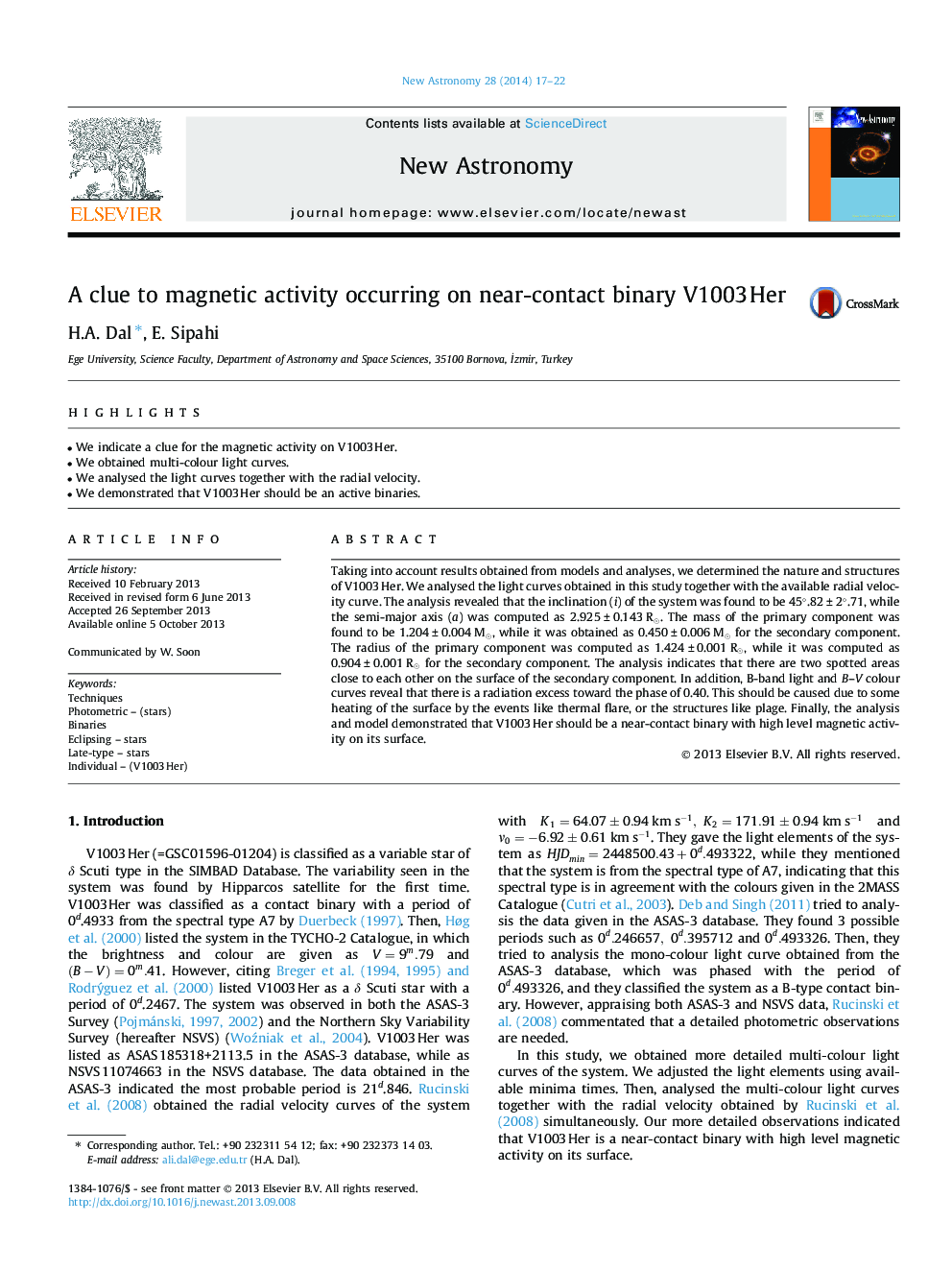| Article ID | Journal | Published Year | Pages | File Type |
|---|---|---|---|---|
| 1779010 | New Astronomy | 2014 | 6 Pages |
•We indicate a clue for the magnetic activity on V1003 Her.•We obtained multi-colour light curves.•We analysed the light curves together with the radial velocity.•We demonstrated that V1003 Her should be an active binaries.
Taking into account results obtained from models and analyses, we determined the nature and structures of V1003 Her. We analysed the light curves obtained in this study together with the available radial velocity curve. The analysis revealed that the inclination (i ) of the system was found to be 45°°.82 ± 2°°.71, while the semi-major axis (a) was computed as 2.925 ± 0.143 R⊙R⊙. The mass of the primary component was found to be 1.204 ± 0.004 M⊙M⊙, while it was obtained as 0.450 ± 0.006 M⊙M⊙ for the secondary component. The radius of the primary component was computed as 1.424 ± 0.001 R⊙R⊙, while it was computed as 0.904 ± 0.001 R⊙R⊙ for the secondary component. The analysis indicates that there are two spotted areas close to each other on the surface of the secondary component. In addition, B-band light and B–V colour curves reveal that there is a radiation excess toward the phase of 0.40. This should be caused due to some heating of the surface by the events like thermal flare, or the structures like plage. Finally, the analysis and model demonstrated that V1003 Her should be a near-contact binary with high level magnetic activity on its surface.
